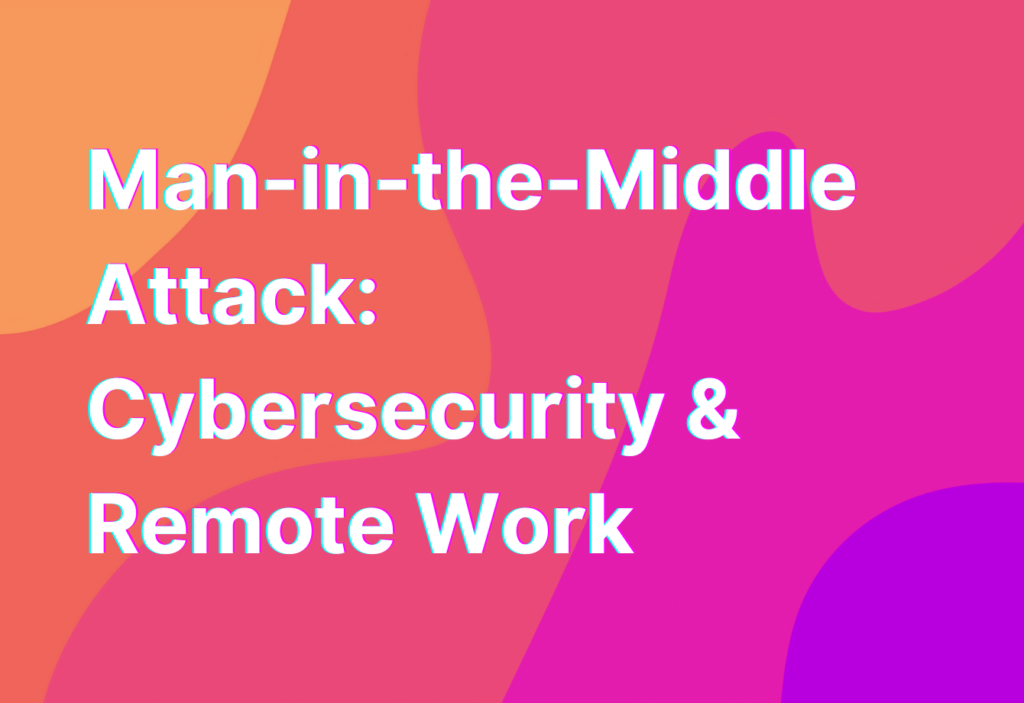Man-in-the-Middle Attack: Cybersecurity & Remote Work
Hey there, remote work enthusiasts! It’s Ashley here, your go-to gal for all things remote work. Today, I want to talk about a cybersecurity threat that remote workers should be aware of: the dreaded man-in-the-middle attack. Now, I know what you’re thinking – “Ashley, what on earth is a man-in-the-middle attack?” Well, my friend, buckle up and get ready to learn all about it!
What is a Man-in-the-Middle Attack?
A man-in-the-middle attack, or MITM for short, is a type of cyber attack where an attacker secretly intercepts and relays communication between two parties without their knowledge. Essentially, the attacker positions themselves between the sender and the receiver, allowing them to eavesdrop on sensitive information or even alter the communication.
Imagine this: you’re working remotely, sending important files and messages back and forth with your team. Little do you know, there’s a sneaky hacker lurking in the shadows, intercepting your communication and potentially gaining access to confidential data. Scary, right?
How Does a Man-in-the-Middle Attack Happen?
Now, you might be wondering how exactly a man-in-the-middle attack occurs. Well, let me break it down for you. There are a few common methods that attackers use to carry out this type of cyber attack:
- Wi-Fi Eavesdropping: Attackers can set up rogue Wi-Fi networks that mimic legitimate ones, tricking unsuspecting users into connecting to them. Once connected, the attacker can intercept and monitor all the data being transmitted.
- ARP Spoofing: In an Address Resolution Protocol (ARP) spoofing attack, the attacker sends fake ARP messages to the network, tricking devices into sending their data to the attacker instead of the intended recipient.
- Malware: Attackers can infect a user’s device with malware, allowing them to intercept and manipulate communication without the user’s knowledge.
These are just a few examples of how a man-in-the-middle attack can happen. The methods used by attackers are constantly evolving, so it’s important to stay vigilant and take steps to protect yourself.
Protecting Yourself from a Man-in-the-Middle Attack
Now that you know what a man-in-the-middle attack is and how it can happen, let’s talk about how you can protect yourself from falling victim to one:
- Use a Virtual Private Network (VPN): A VPN encrypts your internet connection, making it much more difficult for attackers to intercept your communication. It’s like a secret tunnel that keeps your data safe from prying eyes.
- Be Wary of Public Wi-Fi: Public Wi-Fi networks are a breeding ground for man-in-the-middle attacks. Avoid connecting to unsecured networks, and if you must use public Wi-Fi, consider using a VPN for an extra layer of protection.
- Keep Your Devices and Software Updated: Regularly updating your devices and software ensures that you have the latest security patches, making it harder for attackers to exploit vulnerabilities.
- Double-Check URLs and Certificates: Before entering sensitive information on a website, make sure the URL starts with “https” and that there’s a padlock icon in the address bar. This indicates that the website has a valid SSL certificate and that your connection is secure.
- Educate Yourself and Your Team: Knowledge is power! Stay informed about the latest cybersecurity threats and educate your team about best practices for remote work security.
By following these tips, you can significantly reduce the risk of falling victim to a man-in-the-middle attack. Remember, it’s better to be safe than sorry!
Wrapping Up
Well, folks, we’ve reached the end of our cybersecurity journey. Today, we delved into the world of man-in-the-middle attacks and learned how they can pose a threat to remote workers. But fear not! By staying informed and implementing the necessary security measures, you can protect yourself and your sensitive data.
If you want to dive deeper into the world of remote work cybersecurity, I highly recommend checking out Network Segmentation: Cybersecurity & Remote Work. It’s a fantastic resource that provides valuable insights into network segmentation and its role in keeping remote teams secure.
Until next time, stay safe and happy remote working!


